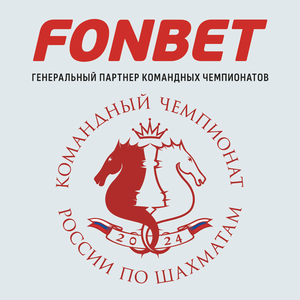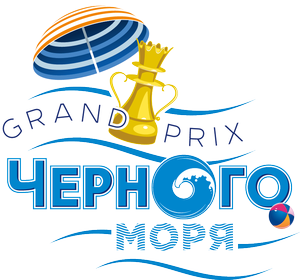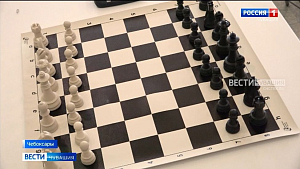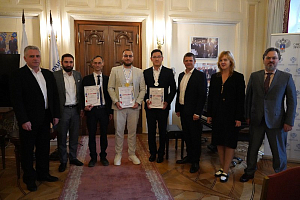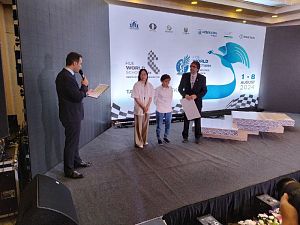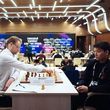Cheater in the Rye
Grandmaster Daniil Dubov discusses the main problem of modern chess
I have had thoughts about writing this article since times when the cheating issue seemed far-fetched, and anti-cheating policies were absolutely non-existent. I have never come around to writing it, though, as opposed to the number of hours spent on debating and contemplating it. It should be noted, however, that chess community has somewhat progressed in combating the cheating. Nowadays, there are various anti-cheating measures in place, and organisers care a lot more than they used to. The issue, however, still stands.
In this article I try to share my thoughts on cheating in a relatively concise manner. It is important to note that I do not claim it to be a truth in the highest instance — the aim of this work is to increase awareness of cheating and fuel more debates around the topic, rather than coming up with ready answers.
This article consists of two parts. The first is dedicated to the cheating itself, its ways and possible methods of combating it. The second part — the most important one in my opinion — will concern the ethics of suspicions, possible ways of punishing both cheaters and accusers. In light of recent events, this topic has unfortunately become ever more relevant.
1. Cheating
First things first, we need to give the definition of cheating. In this article, the term ‘cheating’ will be used to denote an act of receiving computer-generated hints, i.e. we will not discuss the possibility of sneaking pocketbooks with hand-written analyses during the tournament, even if it could be of great help during the game.
Ways of cheating
A number of cheating ways is unlimited, as you can imagine, and some of those will be discussed later on. As vast an area as it is,we will break it down into ‘simple’ and ‘complex’ methods. By ‘simple’, I mean ways of cheating where a player brings in an electronic device — regardless of whether it is a mobile phone in a pocket or an earpiece in the ear. ‘Complex’ cheating is such that it does not involve bringing in of any banned items. It is clear that fighting ‘complex’ cheating seems a trickier task.
Let’s start with ‘simple’ cheating. The downside of it is pretty obvious — if you are caught, it is next to impossible to prove your innocence. On a bright side, if you have a good technique (both in chess and in cheating), you can perform this act of dishonesty with only one assistant, or even all by yourself.
So, how does ‘simple’ cheating work? Clearly, a player needs to smuggle an electronic device into the room past security control. How is this possible?
Vlad Tkachev and Daniil Dubov's video about cheating has more than 47K views on YouTube
First of all, the security control at the point of entry is well-known to be carried out lamely, if at all. For example, it is not infrequent for a person to pass through a security frame and for the detector to start beeping. A person’s simply telling the security guard that it is probably due to his belt is enough to make it through. The probability of a thorough search is extremely low — although your pockets might be checked, no one will bother giving a search more than 30 seconds. To bypass the security frame is yet another frequency.
The last but not the least, there are devices on the market which will not lend themselves to detecting by security frames. Thus, micro invisible earpiece connecting wirelessly to another device can be purchased for 250-400$. Since this article is not a cheating manual, I am not going to name any specific vendors, but the point is that they are easily available. The range of action varies — if a potential cheater is unable to acquire a long-range appliance, he can easily have a go-betweener to hook up to a person behind the computer. Let’s consider the following scenario. Roughly speaking, Petya buys an appliance operating within 100m. He arrives at the venue wearing his earpiece, which is neither visible nor detectable by security frames. Petya keeps in touch with Sasha, who sits in a cafe 60m away. Somewhere in Australia there is Evgeny analysing positions on a computer. When Petya's opponent makes a move, Sasha learns about it via live stream or by visiting the playing hall, texting a message to Zhenya. The latter, in turn, feeds the opponent’s move into computer, which spits out the best move for Petya. Zhenya texts this move to Sasha, who conveys it to Petya via an earpiece. Does it sound complicated? Perhaps, but in reality, such a scheme needs investing $1,000 max, while enabling a player to win nearly every tournament.
Of course, there are variations of this scheme. It can be done only with two people, moves can be find out not only through live stream, but also by simply walking into the room. It is also important to understand that player does not need hints on every step of the game — even 3-4 opportunities to receive a clue increase chances of winning by roughly 3 times.
The only kind of ‘simple’ cheating that stands out is when cheater is acting alone. Theoretically it is possible, however it is much more difficult and risky. Cheater has to bring in a BIG device, such as a phone, with which he will then go to the toilet in order to analyse a move. If it happens no more than 2-3 times per game, it would probably not be noticeable, however for the cheater the risk is much higher, and number of opportunities is much lesser.
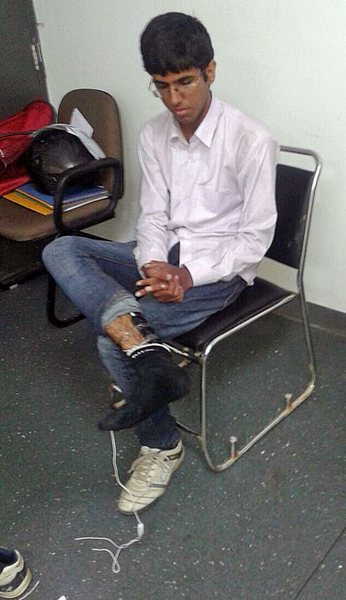
Now, let’s talk about ‘complex’ cheating. In general, the only difference from ‘simple’ cheating is that player receives information not through devices and appliances, but by contact (usually non-verbal kind) with a member of the audience.
Let’s consider this method on a previous example. Petya, Sasha and Jenya (by the way, all heroes are fictitious, all coincidences are random) decided to win yet another tournament. However, in first few days something went wrong — the earpiece broke down / Petya became scared / whatever else. Consequently, they agreed to implement plan B: instead of using complicated devices, Sasha entered the game room (or watched the live stream on his phone) in order to find out moves of Petya’s opponent. After that, he left the room, texted Jenya to Australia, who then replied back with a correct move for Petya. Sasha again entered the room, came close to the board, and — the most difficult part — made a signal. For example, scratching a nose could mean a knight move, cough would stand for bishop move, etc. Surely, Petya needs to have some knowledge in order to choose the right one out of all possible knight moves, but usually it is not rocket science. It is important to remember that during most tournaments, players and audience can meet not only in the game room, but also in the smoking area, on the way to the toilet or near any other table in the room. Therefore, messenger does not always have to hang around the cheater’s table.
Again, sounds difficult? Probably. This may require a week or two of rehearsal. It is too far-fetched, and nobody would play those espionage games? Maybe. But if somebody would — he would win all tournaments; any one he chooses to. And to catch this kind of cheater is nearly impossible — there would not be any physical proof on the gamer.
The only disadvantage of such method is the large amount of people needed to carry out the procedure. It is difficult, but possible to involve only two people in such scheme, however to be in a safe side, three people increase the chances of successful operation. Obviously, all of them should have a very close relationship to each other, so their non-verbal communication is at its best.
I will again mention that hints do not have to be regular — 2-3 clues in critical moments should be enough. Therefore, strategy of cheaters is usually based around that. For example, if a player needs a hint, he goes for a smoke. This is seen by a messenger, who quickly organises help. After 2-3 moves in a critical position calculated by computer, player gets an immense advantage, and then carries on with the game by himself. It is not necessary to win all games and tournaments — it is enough to know that when you desperately need it, you have an opportunity to do so.
2. Ways of fighting cheating
After discussing possible methods of cheating, let’s talk about most common ways of combating cheating and then try to understand what exactly each of them targets.
1) Delay of the stream
The most popular method is delay of a live stream. It is implemented nearly everywhere. Additionally, it does not require any extra efforts or financial investments from an organising party. As we could see, it doesn’t eliminate any of the described above ways of cheating, however it makes all cheaters’ lives more difficult — they have to waste their precious time, or try to find a way to transmit information straight from the game room. To sum up, delay of live stream is an undeniably useful arrangement, but not enough to prevent cheating completely.
2) Security frame / security guard with detecting device
Thankfully, this method of combating cheating becomes more and more popular. Its advantages are obvious: there is a chance of catching a cheater with the device even before he enters the game room, and actual cheaters get more intimidated by these. However, there are weaknesses to this method as well. First of all, this can be costly (to my knowledge, such frame can cost more than 10,000$) for organizers. Second of all, lack of thoroughness makes it practically useless. Frame signalled when person went through, but he was still allowed to pass through to the building, or person just walked around it and nobody noticed. Clearly, such anti-cheating method requires attentiveness and concentration from security guards or people who carry out the check.
3) Ban on carrying own pens and watches
This method still seems a bit bizarre to me. Does anybody actually think that James Bond, who has a pen with installed camera or microphone, wouldn’t be able to find another way to carry it inside? Moreover, the rule exists, but it’s not kept — people still come in with their watches and pens.
4) Ban on game room entrance (for audience)
In my opinion, this is the most effective method so far — the only one which prevents ‘complex’ cheating. However, it is not popular, and this is understandable — if you don’t have the audience, why would you even organise a tournament in the first place? This method is used exclusively inqualifying/title competitions of FIDE, such as World Cup, Candidates Tournament, World Championship etc. Despite its radicalnature, it seems to be the only more or less effective way to combat cheating. In order to satisfy the audience, high-quality live stream with a commentator should be organised — in this way, nobody would be highly interested in entering the game room.
Now, in order to illustrate the current situation, I will talk about anti-cheating methods that were implemented on tournaments that I took part in in the last year. Please note, that this will only concern anti-cheating methods, and not the general management of the tournament. These two factors are not interchangeable. So, there it is.
Higher League. During Higher Leagues, traditionally nobody pays attention, but it involves quite a small group of people; therefore, regular breaks or unfamiliar members of audience are spotted pretty quickly. There are no security frames or any kind of search.
World Cup. This is a pretty mysterious competition, which always has strong anti-cheating measures in place. However, it has its own nuances. For example, this year (2018) there was both a frame and a search at the entrance, but audience was relatively freely allowed into the game room — there was only a very quick light search. In addition, during the game it was pretty easy to go outside on the street and chat someone up, somebody like Vladimir Borisovich Kramnik. Or engage in something else — nobody supervised the outside area.
European Chess Team Championship in Crete, Greece. There was a security frame with a relatively thorough search, but people could come in freely in the game room, which itself was huge. In general, you could clearly see the good work done, but also the number of opportunities to cheat.
Tournament in memory of Yuri Eliseev. Since we only awarded prizes for the beauty of the game, we did not care about anti-cheating measures at all.
Russian Championship Superfinal. Very limited audience allowance — small groups for a short amount of time, however no frames or search. It would be much easier to bring a gun to the game, rather than a friend.
Tradewise Gibraltar Chess Festival.This is an absolutely unique tournament — strong players, valuable prizes — and no anti-cheating measures. One poorly working frame, which can be easily walked around. Game rooms are located on different floors, and there are no obstacles to walk between those, as well as going outside on the street. If during a game you would like to have a cup of coffee, you would have to go to the bar — it is located in hotel lobby. There are also screens with live stream of games, around which excited audience chatters about current games; just nearby there is a commentator room. In general, you could put a machine gun outside and once in half an hour casually go shoot it. Englishmen are discreet people; I suppose, for cheaters in first few games there is nothing to be afraid of. Interesting fact — a complete analogue of Gibraltar in terms of anti-cheating policies would be Aeroflot Open.
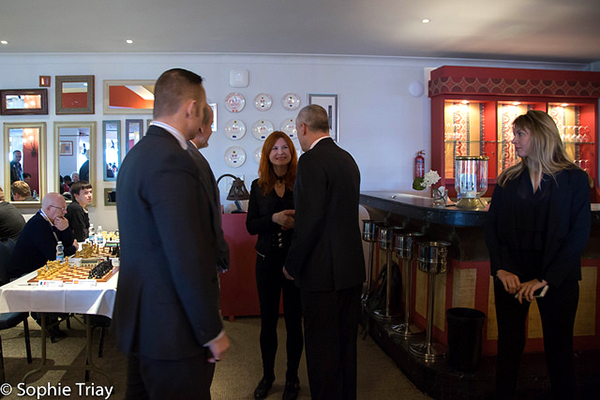
Tal Memorial.The format of tournament itself — a rapidround-robin event — does not foster cheating, as audience is pretty far from the gamers during the game. Not bad.
European Individual Chess Championship in Batumi, Georgia. A rare case when I want to compliment the organizers: probably, this is the best tournament in terms of combating cheating out of all that I played. There was everything: a frame, a search, live stream delay, but main thing — audience was not allowed into the game room. Not just formally (like at European Individual Chess Championship in Minsk, where everyone was allowed in anyway), but in reality, too — there were no people in the room apart from players and judges. Of course, theoretically it was possible to cheat even there, but it was hindered to a maximum.
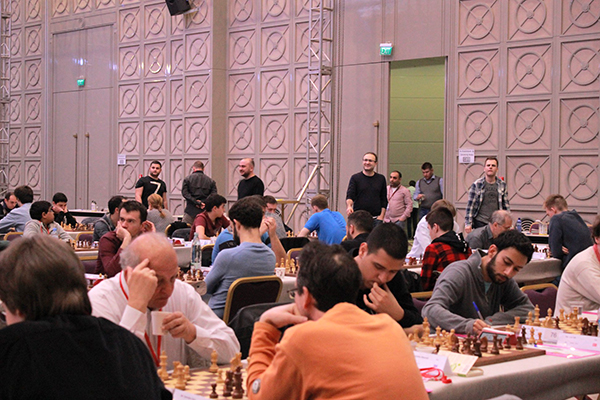
Russian Team Championship in Sochi. Well, there is not much to say here — there were no anti-cheating measures whatsoever. You could come in with a phone, with a gun or with a knife — there is not a single frame. Nobody stops audience from entering, and literally anybody could come inside. Actually, there was not even a barrier which would separate game area from the guest zone of hotel ‘Zhemchuzhina’.
China vs. World Match.I find it difficult to judge that event because in China I focus primarily on surviving, but as far as I remember, there was a security frame. Besides, it was aclosed rapid tournament — in such tournament cheating is less likely.
It is important to note that I play pretty good tournaments, if you don’t consider closed elite ones. Therefore, in tournaments of lower rank, the anti-cheating measures are probably even worse than those described above.
Now, I believe it is time to make conclusions. I would describe current situation in a following way: primitive cheating, such as trying to sneak in a phone and use it in the toilet, is now difficult to carry out — tournament organizers truly progressed in making it as difficult as possible. Cheaters who are prepared and trained are usually not impeded, but to be fair, it is pretty difficult to impede them. In my view, as I mentioned, practically the only way is to restrict audience from coming in, but I doubt this policy would be popular — chess players have had audience since the beginning of time and kicking them out (even towards the welcoming arms of professional commentators) would not be easy. In fundamentally important (from the sports point of view) competitions implementing this method seems realistic to me — and then most problems would be solved; though I do find it difficult to offer a solution for tournaments of a smaller scale.
To be continued.
Photo credits: Chessbase.com, official websites of EICC and Tradewise Gibraltar Chess Festival, Eteri Kublashvili and Anna Burtasova
Translated by Daniil Dubov and Anna Bogdanova








